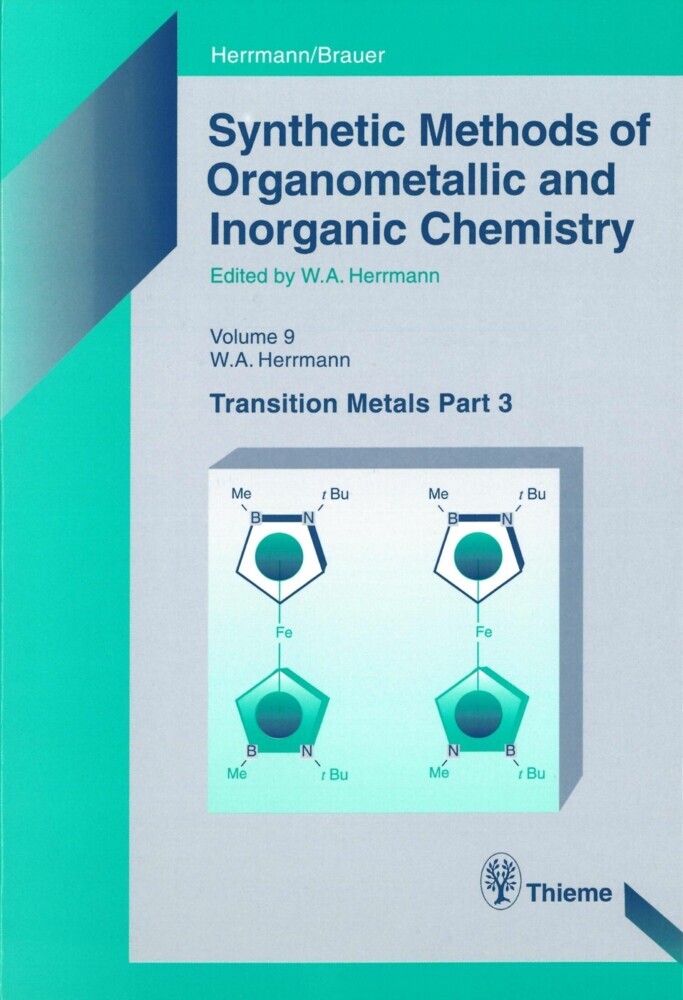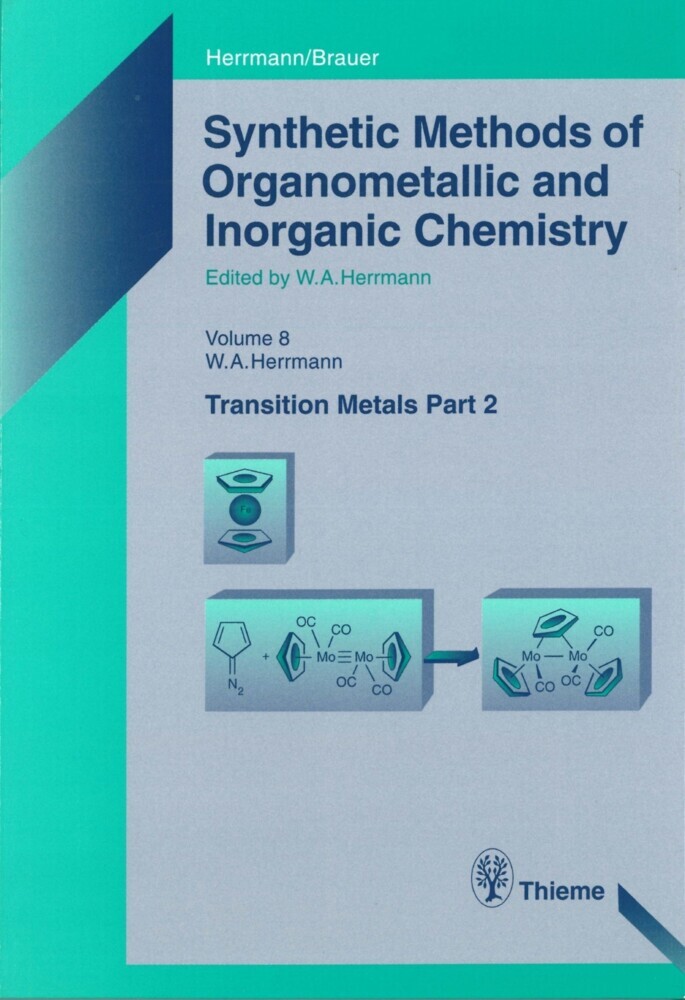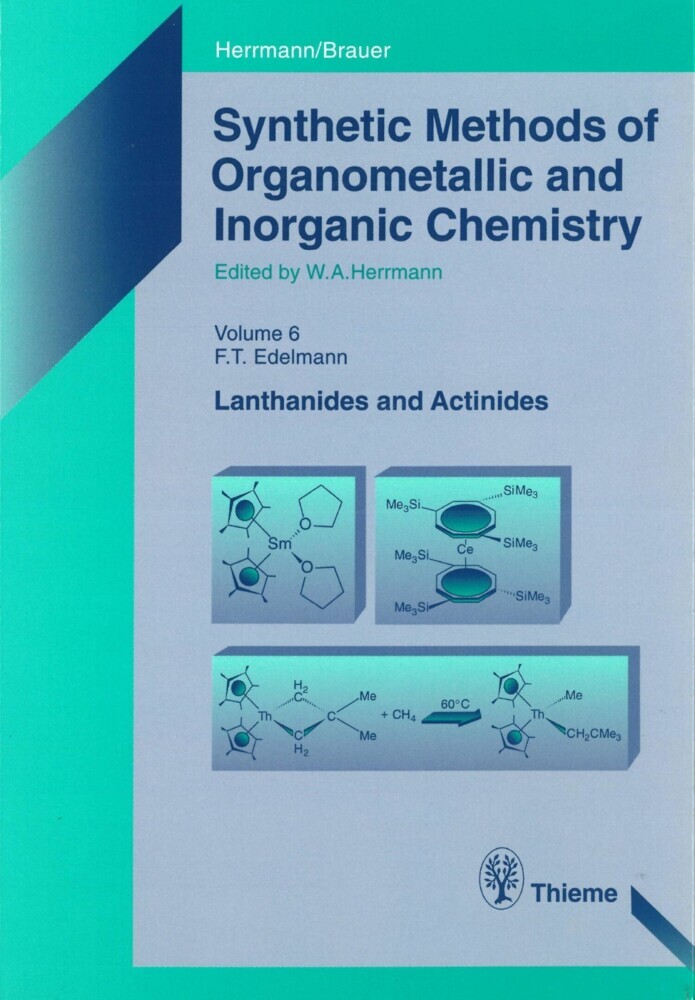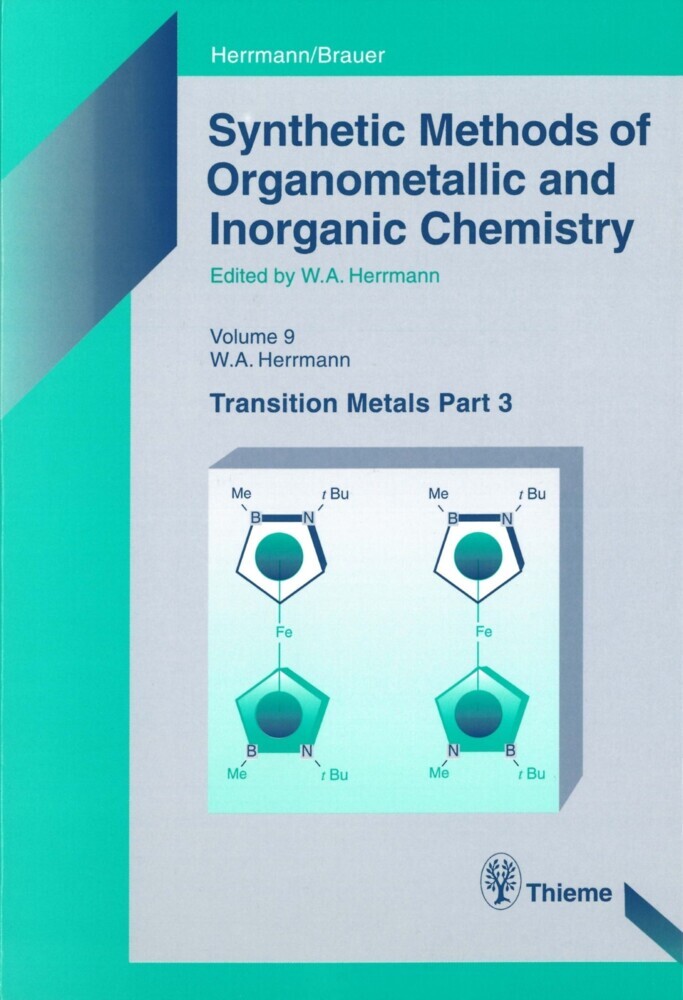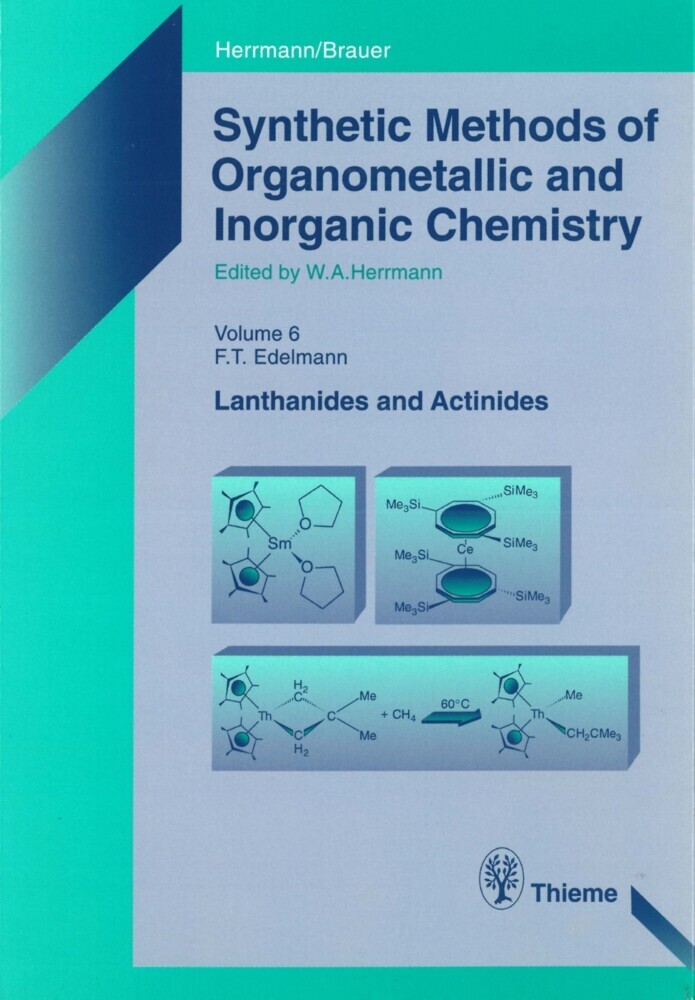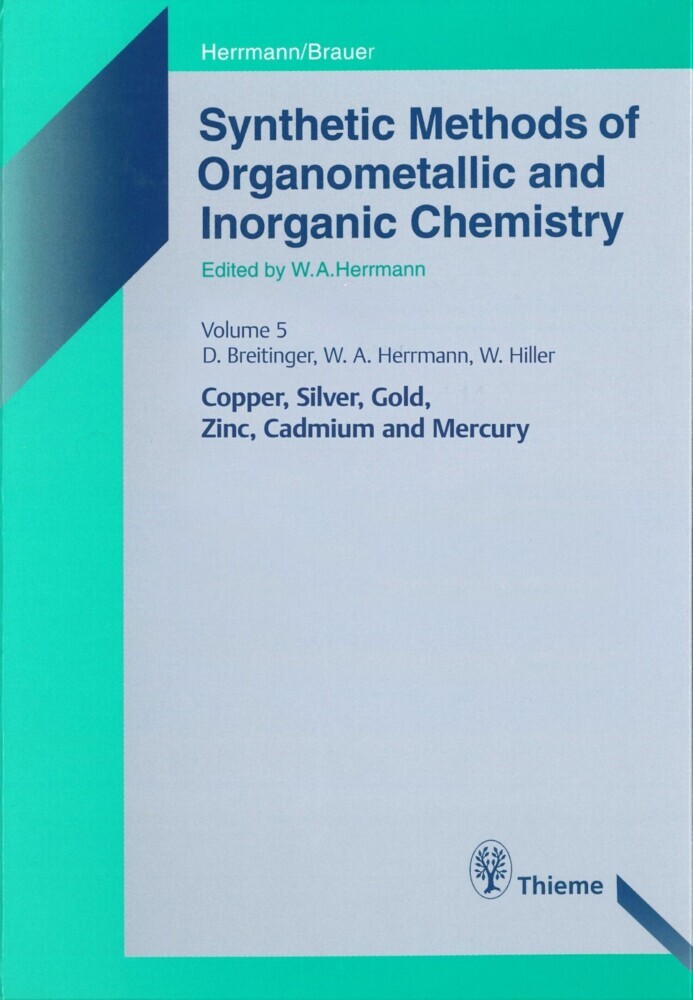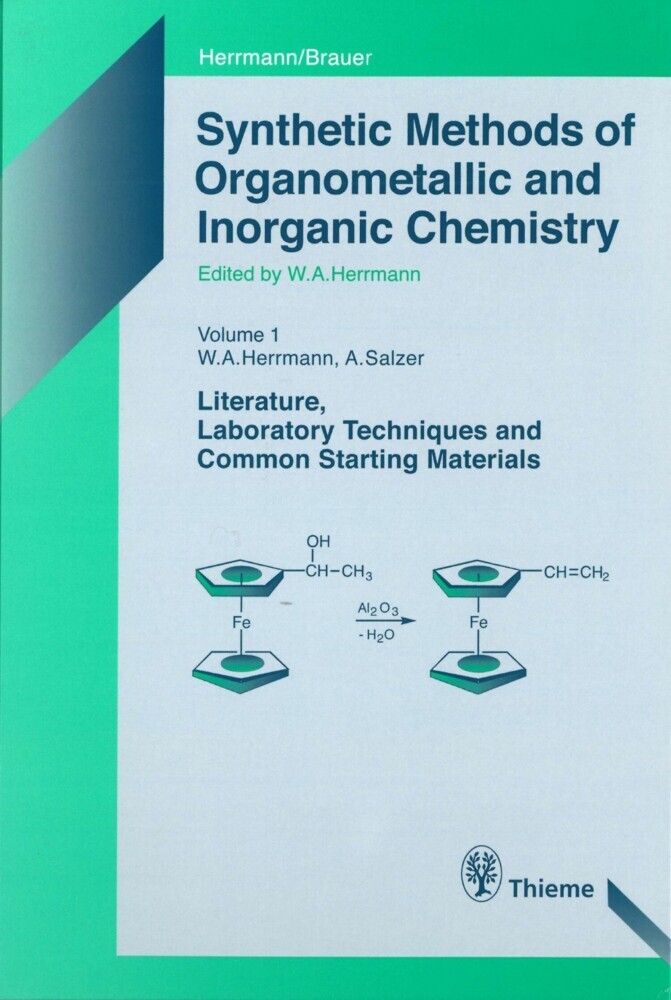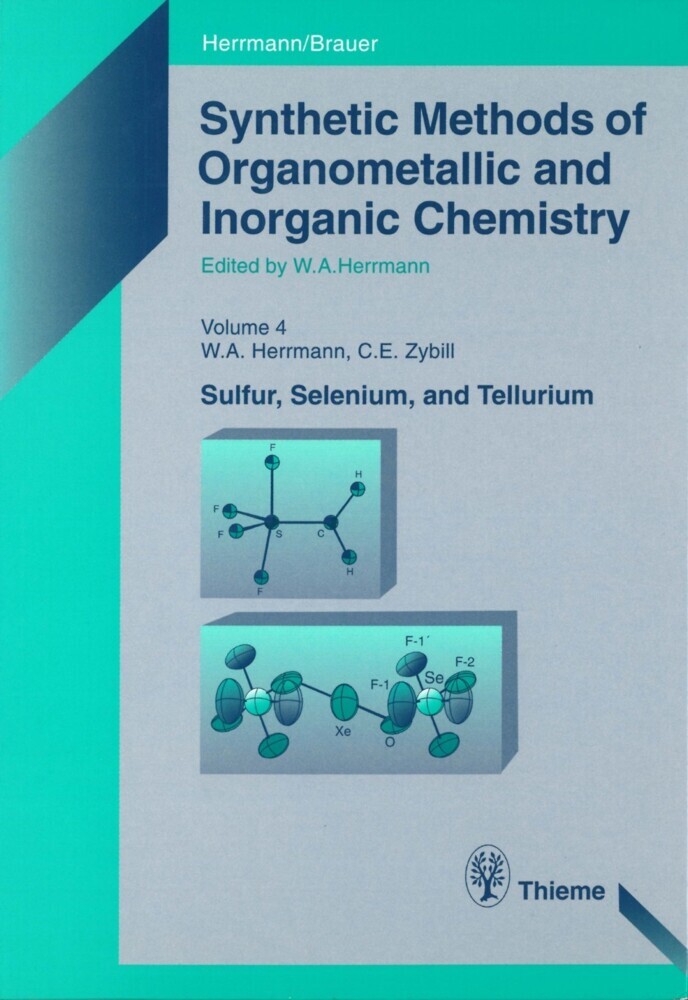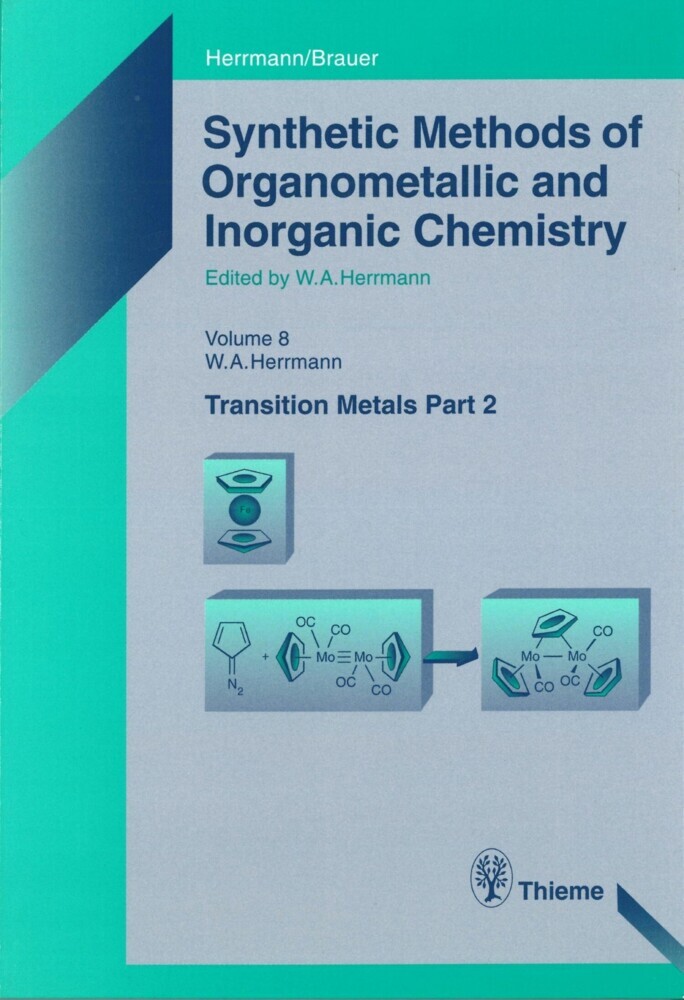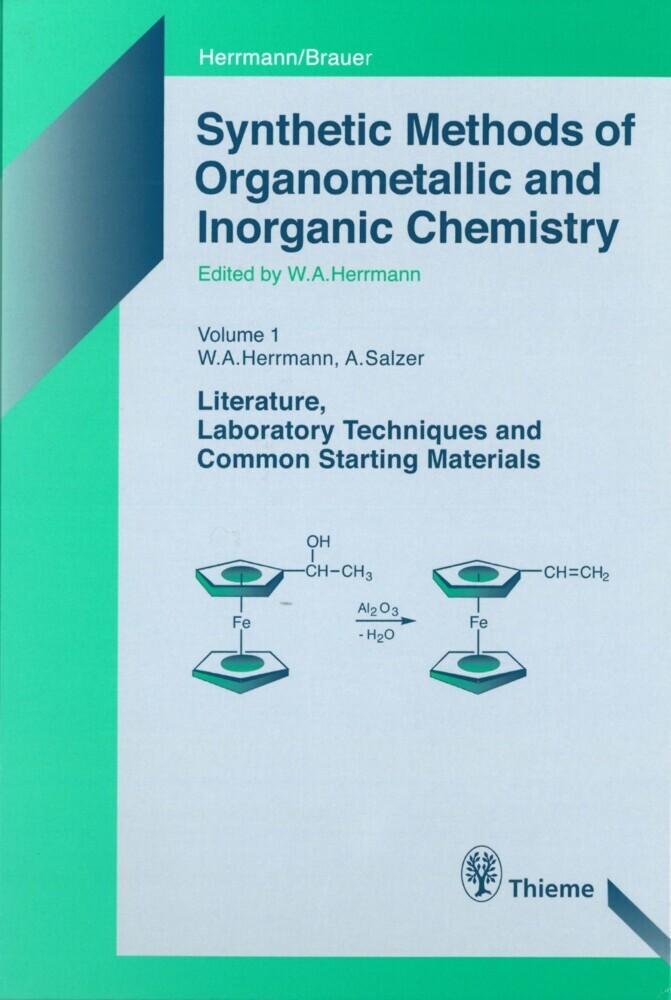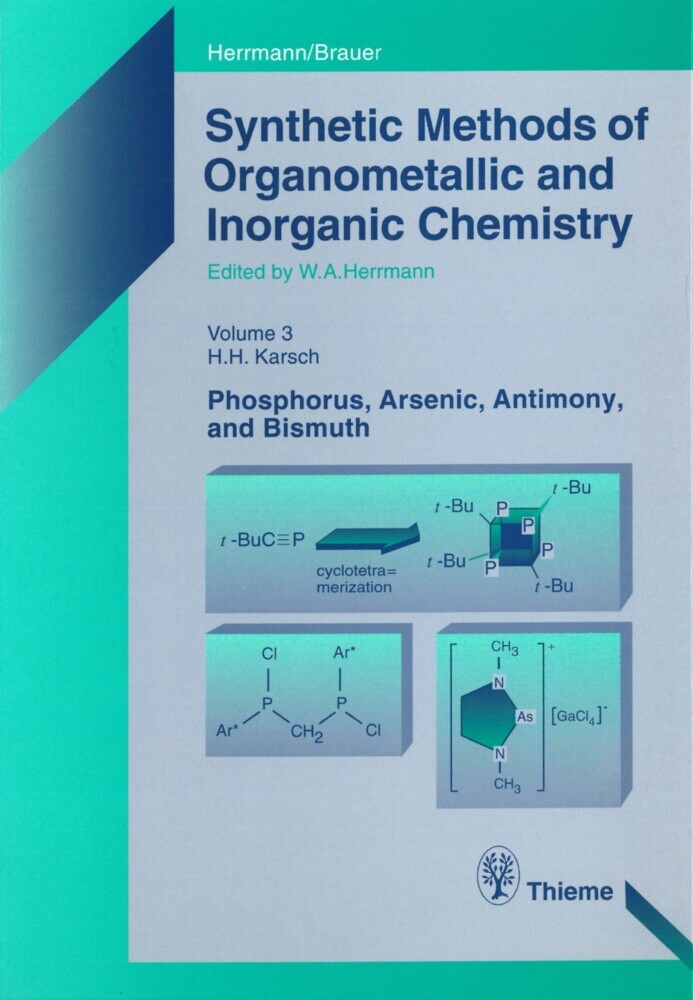Synthetic Methods of Organometallic and Inorganic Chemistry, Volume 9, 2000
Volume 9: Transition Metals Part 3
Synthetic Methods of Organometallic and Inorganic Chemistry, Volume 9, 2000
Volume 9: Transition Metals Part 3
Designed as a benchtop tool, the series includes detailed and reliable experimental procedures for the preparation of common but imp ortant starting compounds, organized according to the periodic table. Properties of the compounds and additional references are also provided. In most cases, no strict borderline has been drawn between inorganic and organometallic compounds. Instead, the material is conveniently presented so that for every group of elements, the various aspects of the chemistry are combined. Several hundred in ternational specialists with established expertise in their respective fields have contributed, resulting in proven and reliable pre parations. In view of the enormous growth of organometallic chemistry, Synthetic Methods of Organometallic and Inorganic Chemistry p rovides you with a balanced compilation of carefully selected and representative examples for all classes of compounds. // The conte nt of this e-book was originally published in 2000.
Wolfgang A. Herrmann, Georg Brauer
Wolfgang A. Herrmann, Georg Brauer
1;Preface to the SeriesSynthetic Methods of Organometallic and Inorganic Chemistry;52;Preface to Volume 9;73;Contents;84;Chapter 1:Alkenyl, Allyl, and Dienyl Complexes of Main Group Elements and Transition Metals;114.1;1.1 Introduction;124.2;1.2 1-Alkenyl Compounds;134.2.1;1.2.1 General Syntheses of Transition Metal-Vinyl Complexes;144.2.2;1.2.2 Main Group Elements;174.2.3;1.2.3 Transition Metal Compounds;194.3;1.3 Allyl Compounds;234.3.1;1.3.1 Main Group Compounds;234.3.2;1.3.2 Transition Metal Compounds;294.4;1.4 Dienyl Compounds;534.5;1.5 Polyenyl Metal Complexes;605;Chapter 2: p-Complexes with HeterocyclicLigands;635.1;2.1 Introduction;645.2;2.2 Pentamethylpyrrole Complexes;675.3;2.3 (. 5-Pyrrolyl)tricarbonylmanganese (Azacymantrene);695.4;2.4 (.5-Cyclopentadienyl)(.5-1H-pyrrol-1-y1)fron (Azaferrocene);705.5;2.5 2,5-Di-tert.-butyl-l-azacyclopentadienylmetal Complexes;725.6;2.6 .5-Phospholy1 Complexes of Early Transition Metals;745.6.1;2.6.1 Synthesis of the Phospholyl Precursors;755.6.2;2.6.2 Synthesis of the Phospholyl Complexes;785.7;2.7 4,5-Diphenyl-1,3-Diphospholide Anion and (.5-4,5-Dipheny1-1,3-diphospholy1)(.5-cyclopentadienyl)iron;825.8;2.8 2,21 ,5,5'-Tetrakis(trimethylsilyl)-3,3',4,4'-tetramethyl-1,1'-distibaferrocen e;865.9;2.9 Bis(1-tert.-butyl-2-methyl-1H-1,2-azaborolyl)iron and (Wert.-Buty1-2-methy1-1H-1,2-azaborolyl)(dicarbonyl)cobalt;906;Chapter 3:Complexes of N-Heterocyclic Carbenes;946.1;3.1 Introduction;956.2;3.2 High-Yielding Synthesis of Functionalized N-HeterocyclicCarbenes in Liquid Ammonia;956.3;3.3 Synthesis of NHC Complexes by a Metalla-Ugi Reaction;976.4;3.4 Nickel(II) Complexes;986.5;3.5 Nickel(0) Complexes;1006.6;3.6 Palladium(II) Complexes;1026.7;3.7 Immobilization of Pd(II)-NHC Complexes;1076.8;3.8 Palladium(0) Complexes;1116.9;3.9 Iridium(III) Complexes;1146.10;3.10 Ruthenium(II) Complexes;1167;Chapter 4:Oxo- and Alkoxy-Complexes;1237.1;4.1 Alkyltrioxometal Compounds;1247.2;4.2 Oxohalides of Molybdenum and Tungsten;1277.2.1;4.2.1 Tetrachlorooxomolybdenum and -tungsten;1277.2.2;4.2.2 Dichlorodioxomolybdenum and -tungsten;1287.2.3;4.2.3 Dichlorodioxobis(triphenylphosphane oxide)molybdenum and -tungsten,Dioxotungstenacetylacetonate;1297.3;4.3 Trichlorooxotungsten Compounds with Pyridyl Alcoholate Ligands;1317.4;4.4 Dioxomolybdenum and -tungsten Compounds with PyridylAlcoholate Ligands;1337.5;4.5 Other Complexes with Pyridyl Alcoholate Ligands;1377.5.1;4.5.1 Rhenium(V) Complexes;1377.5.2;4.5.2 Palladium and Copper Complexes;1407.6;4.6 Solvent Adducts of (Dibromo)dioxomolybdenum(VI);1417.7;4.7 Lewis Base Adducts of Dihalodioxomolybdenum(VI);1447.7.1;4.7.1 Dihalo(1,4-di-p-toly1-1,4-diazabuta-1,3-diene)dioxomolybdenum(VI);1447.7.2;4.7.2 (1,4-Di-tert.-buty1-1,4-diazabuta- 1,3-diene)dihalodioxomolybdenum(VI);1457.7.3;4.8 Trigonal Bipyramidal Lewis Base Adducts of Methyltrioxorhenium(VII);1477.7.3.1;4.8.1 Pyridine Adducts of Methyltrioxorhenium;1477.7.3.2;4.8.2 Bipyridine Adducts of Methyltrioxorhenium;1488;Chapter 5: Highly Reduced TantalumCarbonyls Derived from the Hexacarbonyltantalum Anion;1518.1;5.1 Hexacarbonyltantalates(1-);1528.2;5.2 Pentacarbonyltantalates(3-);1558.3;5.3 Pentacarbonylhydridotantalates(2-);1578.4;5.4 (Ammine)(pentacarbonyl)tantalates(1-);1588.5;5.5 (tert.-Butyl Isocyanide)(pentacarbonyl)tantalates(1-);1598.6;5.6 (Cyano)(pentacarbonyl)tantalates(2-);1609;Chapter 6: Water-Soluble Metal Complexes of Sulfonated Triphenylphosphane(TPPTS);1639.1;6.1 Introduction;1649.2;6.2 General Remarks;1659.3;6.3 Gel Permeation Chromatography;1659.3.1;6.3.1 Apparatus;1659.3.2;6.3.2 Column Packing;1679.4;6.4 Sulfonated Phosphanes;1689.5;6.5 TPPTS-Metal Complexes;17010;Chapter 7:Miscellaneous Complexes;18810.1;7.1 (Pentamethylcyclopentadienyl)(phosphane)ruthenium Complexes;18910.2;7.2 Ally! and Phosphane Complexes of Palladium;19210.3;7.3 A Selection of Important Alkylidene-Metal Complexes;19510.3.1;7
Herrmann, Wolfgang A.
Herrmann, Wolfgang A.
| ISBN | 9783131792518 |
|---|---|
| Artikelnummer | 9783131792518 |
| Medientyp | E-Book - PDF |
| Copyrightjahr | 2014 |
| Verlag | Georg Thieme Verlag KG |
| Umfang | 231 Seiten |
| Sprache | Englisch |
| Kopierschutz | Digitales Wasserzeichen |

